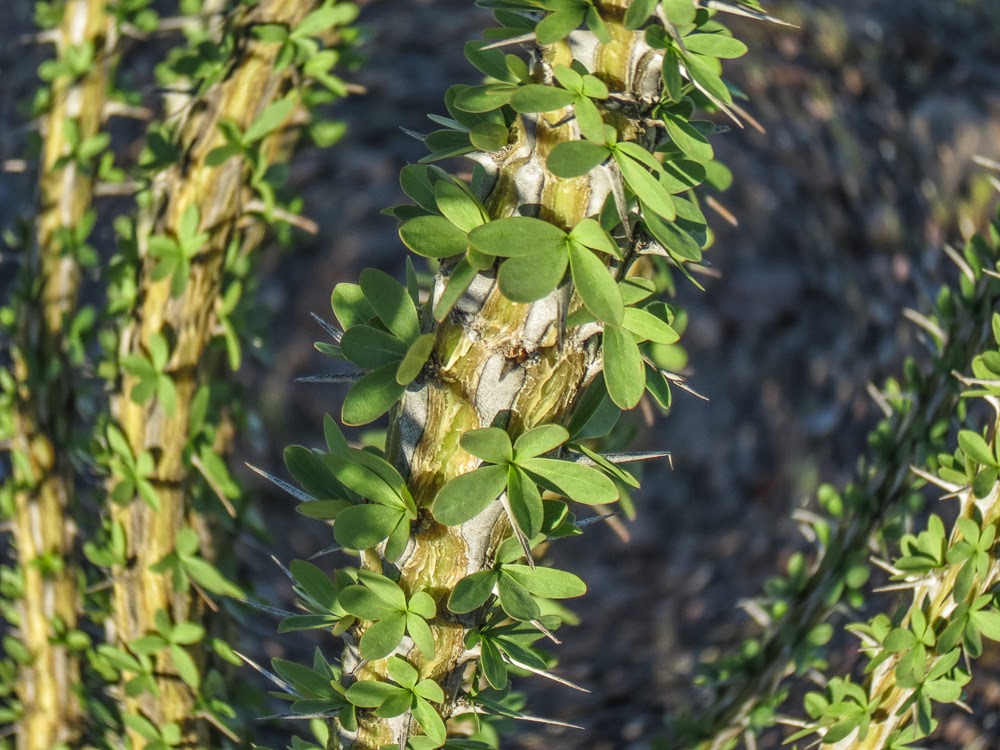Anza Borrego State Park
South of Joshua Tree
East San Diego County
Second largest state park in the nation at over 600,000
acres
From our backyard up Palm Canyon out of Borrego Springs
Only two of the sites had these stone shaded enclosures with
tables and fireplaces. They were built
by the CCC after WWII.

Our
best hikes were from our camp up the canyons
This plant, the ocotillo dominates the driving landscapes. It grows long stalks from the ground that can
easily be 15-20 feet tall, with lazer lance projections more than every sq
inch.
The leaves come on the long stalk you saw above, and you can see the vicious thorn. The leaves (attached directly to the long stalk) and buds (at the end of each long stalk) occur only after rain, then die back as it dries, related only to moisture and not to season.
The ocotillo bud is 6-8 inches long and flowers luminous red/orange.
Bracing, exhilarating wind one day as the front moved in. I had my hat tied on three ways from Sunday
and still had to hang on a couple of times.
The blue agave plant sends up a stalk the size of your
forearm, flowers and then the base gives to yellowing.
Beautiful red barrel cactus everywhere, shimmering jewels in
morning sun
This
desert gets less than 3 inches of rainfall annually. Our storm front put down about ½ inch of
rain, and again, we were in a campground alone. If it looks like weather, the locals seem to
disappear. For us it was walking in a desert
running water. Palm Canyon consistently
spring fed, ends in oasis.
Our
last night in the park we camped in Blair Valley and morning walked into the
site of a winter dwelling for the Kumayee tribe. The village was here September thru May and
summered in the mountains.
Like many of our hikes it ended in a scramble. I’ve climbed over more rocks than I ever knew
I could.
The convivial community kitchen was a relatively flat
opening in the trail with large rocks, many at cabinet level. Women made and used indentations in rock to
mortar roots, cactus, grains and berries into sustenance. If we were tough enough, eating from this
landscape would lend our cell structures resilience in the face of unrelenting
heat and dry. Probably rare to see the deeper indentations
with rain water.






















No comments:
Post a Comment